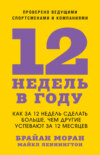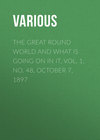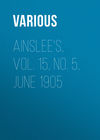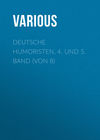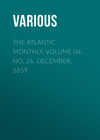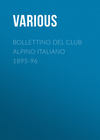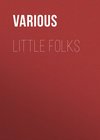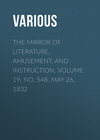Читать книгу: «Birds and Nature, Vol. 12 No. 3 [August 1902]», страница 4
THE LOUISIANA WATER-THRUSH
(Seiurus motacilla.)
The Louisiana Water-thrush is a woodland bird with quite an extended range, which includes all of the eastern United States west to the plains and north to Massachusetts, Michigan and Minnesota. It winters in the region of the Gulf of Mexico and southward into South America. This bird seems to be burdened with long names, for it is also called the Large-billed Water-thrush and Large-billed Wagtail Warbler. The last name is quite appropriate for it, as well as the other water-thrushes, are warblers rather than thrushes. The name Wagtail well describes one of its most striking characteristics. It is a dignified bird, and as it moves with stately steps along the limb of a tree, or a log upon the ground, the tail moves up and down in rhythm with its step. It is a shy bird and its “never-ceasing alertness suggests the watchfulness of the savage.” When discovered and that will not be until it already knows of the intruder’s presence, it sounds an alarm and quickly flies to some distant perch where it watches every movement of the invader, its body constantly teetering as if with suppressed excitement.
When seeking a nesting site the Water-thrush shows a partiality for wild and favorable localities near a stream of water, especially “where dashing brooks leap down wooded hillsides.” At times, however, it will select a retired spot on the wooded banks of a lowland stream or of a lake. The nest is built in some secure retreat among the roots of an overturned tree, in the cavity of an old log or stump, or in the moss under a bank. An impenetrable thicket with a rank growth of ferns and moss, is the usual desideratum when seeking a place to locate its home.
The nests are bulky and constructed with dead leaves, often partly decayed, which are obtained from the muddy banks and with the mud still adhering to them. These, with twigs and rootlets, are laid together and when the mud dries all are cemented into a compact mass which forms the wall of the nest. This is lined with fine grasses, small roots, bark fibers and feathers or hair. The nest is so similar in color to that of its environment that it is not easily detected.
The Louisiana Water-thrush seldom utters its interesting song when on the ground, but from some higher perch or when flying. Audubon thought its song was equal to that of the European nightingale; that its notes were as powerful and mellow and not infrequently as varied. Dr. Ridgway says, “This may be true of the ecstatic love-song, heard on rare occasions, and uttered as the singer floats in perfect abandon of joy, with spread tail and fluttering wings, but it can hardly be true of the ordinary song, which, although rich, sweet and penetrating, and almost startling in the first impression it creates, is soon finished and the pleasing effect is somewhat transient. It cannot be denied, however, that its song is one of the richest to be heard in our forests.”
Another Writer speaks of its song as “a beautiful, wild, wayward effort,” and Mr. Chapman says, “As a songster the Water-thrush is without a rival. His song is not to be compared with the clear-voiced carol of the rose-breasted grosbeak, the plaintive chant of the field sparrow, or the hymnlike melody of the true thrushes; it is of a different kind. It is the untamable spirit of the bird rendered in music. There is an almost fierce wildness in its ringing notes. On rare occasions he is inspired to voice his passion in a flight-song, which so far exceeds his usual performance that even the memory of it is thrilling.”
SOME DOGS
When I was a small boy I lived with my parents in my grandfather’s home. Here was grandfather’s large dog Rouse. He was the constant companion of my uncle in his work on the farm. His great desire was to carry something in his mouth when the team started for the field. He was often given a singletree, with which he marched along, showing evident satisfaction. One day he concluded to cut across a field instead of going around the road. The fence was a high rail one and, burdened with the weight of the heavy singletree, he could not jump over. After several vain attempts he dropped his load, stood looking up and down the road. Then looking at the singletree for a moment picked it up and put it through between the rails. He then jumped over the fence, gathered up the singletree and trotted on.
One thing he absolutely refused to carry was an iron wedge unless it was put in a basket. On one occasion this same uncle lost the lash of the whip he was using in driving a yoke of oxen. He had another at the house, but it was nearly a mile distant. He wrote his want on a slip of paper and giving it to Rouse said, “Take this to mother.” He was soon scratching at the kitchen door. When the door was opened he dropped the note on the floor, was given the whip lash and hurried away to the field.
A certain dog belonged to a doctor. He often trotted along under the buggy when the doctor went to call on his patients. On one occasion the doctor rode horseback and hurriedly threw the bridle rein over a hitching post where the visit was made. The horse threw up his head, the bridle rein was freed from the post and the horse started down the road. The dog saw the move and started after him. After some little difficulty he caught the dangling rein, brought the horse back to the post and held him there until the doctor came out.
On another occasion a horse was tied to a post of the porch at the doctor’s house. He got restless and was soon standing with fore feet on the porch. The dog saw it and, catching him by the tail, pulled until he backed down and stood on the ground.
There is a big shepherd dog not far from where I live that watches for the evening train. As soon as it appears he runs to a certain place beside the track, where the mail clerk throws him a bundle of papers. He never fails to be at his post or on the way.
A dog who was utilized to run a dog power churn at last grew tired and resorted to various schemes to get out of the work. Just after the churn had been made ready one day the lady heard the vigorous bawling of a calf and looking out she saw the dog trying hard to get a calf into position to do the churning. After this it was necessary to tie his dog-ship the night before if he was to be used next day.
An Iowa dog who had suffered much from firecrackers on the Fourth always disappeared soon after midnight of the third at the first shot of an anvil or cannon cracker. He spent the day in the country far from town and never returned until the noise had ceased.
A friend who was a photographer had a large Newfoundland dog who had a great deal of curiosity about his make-up, as well as much sense. His face was always the first to appear at the village postoffice window when the mail was opened. The master was an oldtime photographer when stronger water ammonia was much used in the preparation of paper. There was an assistant in the gallery who liked to tease the dog and knowing the trait of desiring to investigate every box or bottle that was opened, played many tricks on him, but none of them seemed to cure him or to lessen this desire until he got a good full whiff of stronger ammonia, which laid him full length on the floor and made him less anxious to look into everything with his nose.
His master had a book for the butcher and a different one for his account with the grocer. When meat or groceries were wanted it was only necessary to give him a book in which had been written the articles desired and a basket and away he went. He knew where to go by the color of the book. Often in coming home with meat he was set upon by other dogs who tried to rob him. One day a large hound tried several times to get the meat, but was kept away by very significant growls. Becoming more determined he made a final dash, when Newfoundland set the basket down and no hound ever got a sounder thrashing. Then with head and tail held high the basket was carried home in triumph.
Alvin M. Hendee.
PECULIAR MEXICAN BREAD
Among some curios lately brought from Mexico, is a cake made of the eggs of water beetles.
This odd sort of edible resembles, outwardly, a biscuit made of coarse brown or oatmeal flour. In taste it is not unlike the same wholesome article of diet. As a matter of fact, water beetles hold a high place in the domestic economy of the poorer natives of Mexico.
Their collection is, therefore, quite an industry, and one in which the Indians, particularly, are adepts.
This is the plan of operation: Reeds are cut and placed along the margins of lakes and ponds. Soon these reeds are covered by an incredible number of eggs so minute that it is necessary to shake them on a cloth to gather them.
These eggs are then put in bags and pounded.
The result is a coarse flour, which may be cooked in a great variety of ways. All highly nutritious and stimulating. A vast number of beetles are also collected and used as food for chickens, but notwithstanding this immense demand, the supply suffers no appreciable diminution.
Louise Jamison.
NATURE’S GLORY
Oh, golden days with cloudless skies —
When forests flame with gorgeous dyes;
A touch of wine seems in the air,
Fields are brown – pastures bare.
Deep purple wraps the distant hills,
Gray shadows fall upon the rills; —
Thro’ rustling corn the zephyrs sigh,
In grief to see fair summer die.
These are days of Nature’s glory,
Sung in song, and told in story.
– J. Mayne Baltimore.
LAPIS LAZULI, AMBER AND MALICHITE
LAPIS LAZULI
This stone was the sapphire of the Greeks, Romans and Hebrew Scriptures. Pliny likened it to the blue sky adorned with stars. Large quantities of worked pieces of it are found in early Egyptian tombs, and the Chinese have long held it in high esteem. Marco Polo visited Asiatic mines of the mineral in 1271 A. D., and these had doubtless been worked for a long time previous. Besides its value as a stone it was in former times used as a blue pigment, giving the ultramarine blue. In modern times not only has the esteem in which the stone is held for ornamental purposes declined but the mineral can be artificially made so as to give the desired blue color for paints and thus the use of the natural lapis lazuli has greatly diminished. It is still however carved to make vases, small dishes, brooches and ring stones and is used to a considerable extent for mosaic work. When, also, pieces of sufficient size and of a uniform color can be found, large carved objects may be made which command a high price.
The stone known as lapis lazuli as it occurs in nature is not a single mineral but a mixture of several, among which are calcite, pyrite and pyroxene. From these however it is possible to separate a mineral of uniform composition sometimes crystallized in dodecahedrons which is probably the essential ingredient of the stone. This mineral is known as lazulite and in composition is a silicate of soda and alumina with a small quantity of sodium sulphide. It is by making a substance of this composition that the artificial ultramarine is produced. The artificial is said to be as good as the natural for a pigment and can be produced for a three-hundredth part of the cost. The natural lapis lazuli has a hardness of 5½ and a specific gravity about like that of quartz. It is quite opaque. In color it is blue, varying from the prized ultramarine to paler, and at times is of a greenish shade. It is said the pale colored portions can be turned darker by heating to a red heat. When the variety from Chile is heated in the dark it emits a phosphorescent green light. The stone in Nature is often flecked with white calcite. Portions so affected are not considered as valuable as the uniform blue. Grains of pyrite are also usually scattered through the stone giving the “starry” effect referred to by Pliny.
Lapis lazuli usually occurs in limestone but in connection with granite so that it seems to be a product of the eruption of the granite through the limestone. The lapis lazuli of best quality comes from Asia, the mines being at Badakschan in the northeastern part of Afghanistan on the Oxus river. The mining is done by building great fires on the rocks and throwing water on them to break them. The yield at present is small, not over 1,500 pounds a year being obtained. The lapis lazuli from these mines is distributed all over Asia, going chiefly to China and Russia. The price realized is said to be from $50 to $75 per pound. Lapis lazuli of poorer quality comes from a region at the western end of Lake Baikal in Siberia. The only other important locality is in the Andes Mts. of Chile near the boundary of the Argentine Republic. This material is not much used at the present time on account of its poor quality but it was employed by the Incas for decorative purposes. One mass 24×12×8 in., doubtless from this locality is now in the Field Columbian Museum, and was found in a Peruvian grave. It is one of the largest masses of lapis lazuli known.
The walls of a palace at Zarskoe-Selo, Russia, built by order of Catherine II are entirely lined with slabs of lapis lazuli and amber. Pulverized the stone was used as a tonic and purgative by the Greeks and Romans. The name lapis lazuli means blue stone. Armenian stone is another term by which the stone is known in trade.

![Birds and Nature, Vol. 12 No. 3 [August 1902]](https://cdn.litres.ru/pub/c/cover_100/25569231.jpg)







